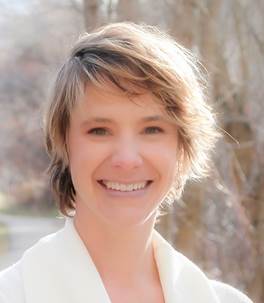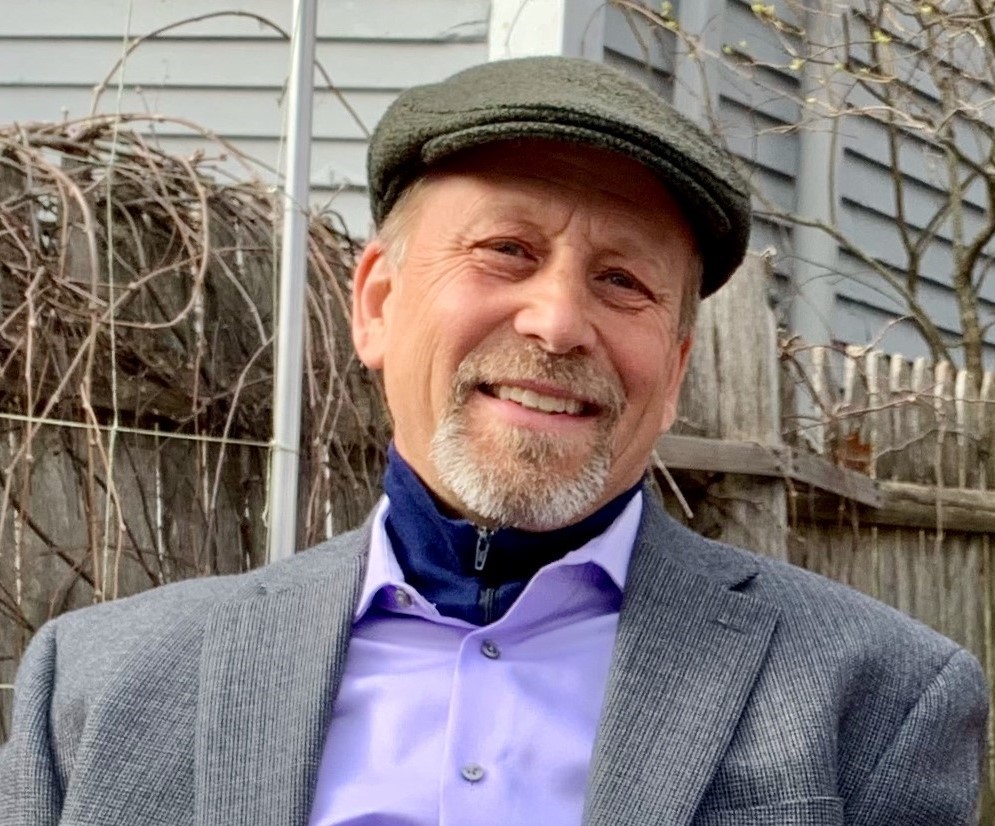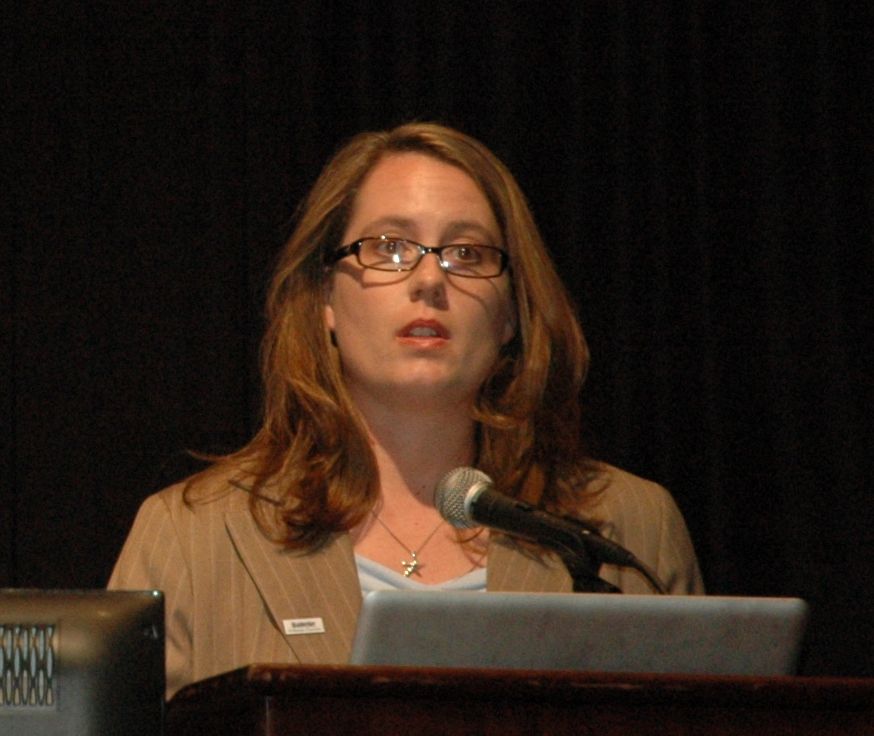Integrated DNAPL Site Characterization
Sponsored by: Interstate Technology and Regulatory Council
"Sites contaminated with dense nonaqueous phase liquids (DNAPLs) and DNAPL mixtures present significant environmental challenges. Despite the decades spent on characterizing and attempting to remediate DNAPL sites, substantial risk remains. Inadequate characterization of site geology as well as the distribution, characteristics, and behavior of contaminants -- by relying on traditional monitoring well methods rather than more innovative and integrated approaches -- has limited the success of many remediation efforts.
The Integrated DNAPL Site Characterization Team has synthesized the knowledge about DNAPL site characterization and remediation acquired over the past several decades, and has integrated that information into a new document, Integrated DNAPL Site Characterization and Tools Selection (ISC-1, 2015). This guidance is a resource to inform regulators, responsible parties, other problem holders, consultants, community stakeholders, and other interested parties of the critical concepts related to characterization approaches and tools for collecting subsurface data at DNAPL sites. After this associated training, participants will be able to use the ITRC Integrated DNAPL Site Characterization and Tools Selection (ISC-1, 2015) guidance to develop and support an integrated approach to DNAPL site characterization, including:
- Identify what site conditions must be considered when developing an informative DNAPL conceptual site model (CSM)
- Define an objectives-based DNAPL characterization strategy
- Understand what tools and resources are available to improve the identification, collection, and evaluation of appropriate site characterization data
- Navigate the DNAPL characterization tools table and select appropriate technologies to fill site-specific data gaps
Accessibility, Recording, and Content Disclaimer
Rehabilitation Act Notice for Reasonable Accommodation
It is EPA's policy to make reasonable accommodation to persons with disabilities wishing to participate in the agency's programs and activities, pursuant to the Rehabilitation Act of 1973, 29 U.S.C. 791. Any request for accommodation should be made to at or , preferably one week or more in advance of the webinar, so that EPA will have sufficient time to process the request. EPA would welcome specific recommendations from requestors specifying the nature or type of accommodation needed. Please note that CLU-IN provides both alternate phone call-in options and closed captioning for all webinars, and requests for these specific accommodations are not necessary.
Webinar Recording
By participating in this CLU-IN webinar, you automatically agree to authorize recording of audio and visual content presented during this live event and consent to subsequent use of this recording in the public domain by the U.S. Environmental Protection Agency. This recording may include questions, comments and poll responses provided by you during the live event in addition to your name, voice, image or likeness. This recording will be made available after the conclusion of the live event as part of the CLU-IN webinar archives, and will remain available indefinitely. If you do not wish to consent to the recording, please do not join the live event, and contact Jean Balent at 202-566-0832 or balent.jean@epa.gov to discuss your concerns.
Content Disclaimer
This webinar is intended solely to provide information to the public. The views and opinions expressed as part of this webinar do not necessarily state or reflect those of the U.S. Environmental Protection Agency. It is not intended, nor can it be relied upon, to create any rights enforceable by any party in litigation with the United States, or to endorse the use of products or services provided by specific vendors. With respect to this webinar, neither the United States Government nor any of their employees, makes any warranty, express or implied, including the warranties of merchantability and fitness for a particular purpose, or assumes any legal liability or responsibility for the accuracy, completeness, or usefulness of any information, apparatus, product, or process disclosed, or represents that its use would not infringe privately owned rights.
Presenters:
 Naji Akladiss, P.E., Maine Department of Environmental Protection (naji.n.akladiss@maine.gov)
Naji Akladiss, P.E., Maine Department of Environmental Protection (naji.n.akladiss@maine.gov)
Naji Akladiss, P.E. is a Project Manager with the Maine Department of Environmental Protection (MEDE), Bureau of Remediation in Augusta Maine. He has worked for the Department since 1989 (as an Analytical Chemist in MEDEP Laboratory; and as a Project Manager for federal facilities since 1991). He has experience in environmental technologies and Superfund remediation. Naji is the Project Manager for the clean-up of two Superfund sites in the state of Maine. Prior to joining the Maine DEP Naji worked for Rockwell International in Rockwell’s printed circuit board plant in Maine. He is the leader of the Interstate Technology and Regulatory Council (ITRC) Integrated DNAPLs Site Strategy Team as well as the co-leader of the Characterization team. He has also served as the ITRC state Point of Contact from Maine. Naji earned a bachelor's degree in applied sciences in 1975. He is a licensed Professional Engineer in the State of Maine and a certified Quality Engineer (CQE) by the American Society for Quality.
 Tamzen W. Macbeth, CDM Smith Inc. (macbethtw@cdmsmith.com)
Tamzen W. Macbeth, CDM Smith Inc. (macbethtw@cdmsmith.com)
Tamzen Macbeth is a Vice President at CDM Smith out of Helena, Montana. She has worked for CDM since 2009. Previously, she worked for 7 years at North Wind Inc. Tamzen is an environmental engineer with an interdisciplinary academic and research background in microbiology and engineering. She specializes in the development, demonstration and application of innovative, cost-effective technologies for contaminated groundwater. Specifically, she is experienced in all aspects of remedies from characterization to remediation for DNAPLs, dissolved organic, inorganic, and radioactive contaminants under CERCLA and RCRA regulatory processes. She has expertise in a variety of chemical, biological, thermal, extraction and solidification/stabilization remediation techniques as well as natural attenuation. Her current work focuses developing combined technology approaches, and innovative characterization techniques such as mass flux and mass discharge metrics. Since 2004, Tamzen has contributed to the ITRC as a team member and instructor for the ITRC’s Bioremediation of DNAPLs, Integrated DNAPL Site Strategy, Molecular Diagnostics and DNAPL Characterization teams. Tamzen earned a bachelor's degree in Microbiology in 2000 and a master’s degree in Environmental Engineering in 2002 both from Idaho State University in Pocatello, Idaho, and a doctoral degree from in Civil and Environmental Engineering in 2008 from the University of Idaho in Moscow, Idaho.
 Alex MacDonald, California Regional Water Quality Control Board (alex.macdonald@waterboards.ca.gov)
Alex MacDonald, California Regional Water Quality Control Board (alex.macdonald@waterboards.ca.gov)
Alex MacDonald is a senior engineer in the technical support section of the Cleanup Unit at the Central Valley Regional Water Quality Control Board in Rancho Cordova, California. He has worked at the Water Quality Control Board since 1984. He primarily works on cleanup of the Aerojet site in Rancho Cordova, California and other nearby sites such as McClellan Air Force Base. Alex has also worked on cleanup at underground and above ground storage tanks sites; permitting and inspection of landfill and waste disposal to land sites; regulating application of biosolids sites; regulating NPDES sites that include wastewater treatment plants, power plants, industrial facilities, and groundwater treatment facilities; and permitting and inspecting dredging projects. Alex was a member of the ITRC Perchlorate team. Alex earned a bachelor's degree in Civil/Environmental Engineering from Stanford University in Palo Alto , California in 1977 and a master's degree in Civil/Environmental Engineering from Sacramento State University in Sacramento, California in 1987.
 Trevor King, Woodard & Curran (TCKing@woodardcurran.com)
Trevor King, Woodard & Curran (TCKing@woodardcurran.com)
Trevor King is currently working with Woodard & Curran. He has global experience in the planning, implementing and management of environmental and DNAPL remediation projects. He has extensive experience in the development of characterization and closure strategies for soil and groundwater remediation projects, and implementing cost effective remedial actions. Since 1993, Trevor has planned, implemented, and managed a wide variety of environmental projects in New Jersey, Pennsylvania, Florida and Puerto Rico. His experience includes project management, developing conceptual site models in support of remedy selection, developing remedial objectives and site closure strategies for remediation projects, and regulatory and client interface. Trevor has two pneumatic fracturing technology patents. His current company-wide responsibilities include project management and remedial strategy and technology evaluations at a national as well as the regional level. He earned a bachelor's degree in mechanical engineering from the University of Wolverhampton in 1983 and a master's degree in environmental engineering from New Jersey Institute of Technology in 1993. He is a Professional Engineer in environmental engineering in Delaware.
 Jeremy Musson, Pinyon Environmental, Inc. (musson@pinyon-env.com)
Jeremy Musson, Pinyon Environmental, Inc. (musson@pinyon-env.com)
Jeremy Musson is the Principal for Innovation and Optimization at Pinyon Environmental, Inc., based in Lakewood, Colorado with multiple offices in Colorado and Arizona. Jeremy has worked for Pinyon Environmental, Inc. since 2007 and in the environmental field since 1998. He has experience in the design of site characterization and remediation plans, using innovative state-of-the-art methods, for Brownfield, VCRA, UST, and RCRA/CERCLA projects. Jeremy has been a member of the Interstate Regulatory Council (ITRC) since 2011 on the Green and Sustainable Remediation, Dense Non-Aqueous Phase Liquids (DNAPL) Integrated Site Characterization, and Characterization and Remediation of Fractured Bedrock teams. He is a trainer for the Integrated DNAPL Site Characterization course. Additionally, Jeremy serves on the Environmental, Energy, Water Resources, and Scholarship committees for the American Council of Engineering Companies (ACEC) of Colorado. Jeremy earned a bachelor's degree in Marine Geology from Eckerd College in St. Petersburg, Florida in 1998, and has been a listed consultant with the Colorado Department of Labor and Employment, Division of Oil and Public Safety (Listing No 6155) since 2007.
 Nathan Hagelin, Wood PLC (nathan.hagelin@woodplc.com)
Nathan Hagelin, Wood PLC (nathan.hagelin@woodplc.com)
Nathan Hagelin is Vice President and the Director of Woods PLC. He is the remediation technology leader in Wood’s Emerging Contaminants Work Group. He is a Certified Geologist, Licensed Environmental Professional, and Board-Certified Environmental Scientist working for 30+ years on the remediation of contaminated industrial properties and military installations. He has prior experience as a Hydrologist with the U.S. Geological Survey Water Resource Division.
 Heather Rectanus, Ph.D., Geosyntec Consultants, Inc. (hrectanus@geosyntec.com)
Heather Rectanus, Ph.D., Geosyntec Consultants, Inc. (hrectanus@geosyntec.com)
Heather Rectanus, Ph.D., is a Senior Engineer at Geosyntec in Columbia, MD. Heather has more than 12 years of experience leading or working on a broad range of environmental research, development, and implementation projects. She specializes in bioremediation and monitored natural attenuation (MNA) remedial strategies for Comprehensive Environmental Response, Compensation, and Liability Act (CERCLA) and Underground Storage Tank (UST) hazardous waste sites. Her interests reside in technology transfer to integrate the state of the science with field applications, and she has worked on projects encompassing biosparging designs, biobarrier installation, MNA assessment, and Dense Non-Aqueous Phase Liquid (DNAPL) management strategies.
Prior to joining Geosyntec, Heather worked at Battelle Memorial Institute, where she served in a program management role. She also served as conference co-chair for multiple Battelle conferences, including the Eighth, Ninth, and Tenth International Conference on Remediation of Chlorinated and Recalcitrant Compounds; First International Symposium on Bioremediation and Sustainable Environmental Technologies; and Tenth International In Situ and On-Site Bioremediation Symposium. Heather earned a B.S. in Nuclear Engineering and a B.A. in German from Kansas State University in Manhattan, KS in 1998, and continued at Virginia Tech in Blacksburg, Virginia to earn an M.S. in Civil Engineering with a Geoenvironmental Engineering emphasis in 2000 and a Ph.D. in Civil Engineering in 2006.
Moderator:
Nicole Henderson, ITRC Contractor (nicole.henderson@hmenviro.com)
Webinar Slides and References:
Webinar Slides and References:
Additional Resources:
- ITRC Technical and Regulatory Guidance Document: Integrated DNAPL Site Characterization and Tools Selection (ISC-1, 2015)
- ITRC DNAPL Site Characterization Public Team Page
- ITRC's ITRC Technical and Regulatory Guidance Document-Integrated DNAPL Site Strategy (IDSS-1, 2011):Guidance Document
- ITRC's ITRC Technical and Regulatory Guidance Document-Integrated DNAPL Site Strategy (IDSS-1, 2011):Associated online training
- ITRC's Use and Measurement of Mass Flux and Mass Discharge (MASSFLUX-1, 2010):Guidance Document
- ITRC's Use and Measurement of Mass Flux and Mass Discharge (MASSFLUX-1, 2010):Associated online training
- ITRC's Technical & Regulatory Guidance for Enhanced Attenuation of Chlorinated Organics (EACO-1, 2008):Guidance Document
- ITRC's Technical & Regulatory Guidance for Enhanced Attenuation of Chlorinated Organics (EACO-1, 2008):Associated online training archive
- ITRC's Technical & Regulatory Guidance for Enhanced Attenuation of Chlorinated Organics (EACO-1, 2008):Associated online training archive
- ITRC's Technical and Regulatory Guidance document In Situ Bioremediation of Chlorinated Ethene: DNAPL Source Zones (BioDNAPL-3, 2008):Guidance Document
- ITRC's Technical and Regulatory Guidance document In Situ Bioremediation of Chlorinated Ethene: DNAPL Source Zones (BioDNAPL-3, 2008):Associated online training archive
- In Situ Bioremediation of Chlorinated Ethene DNAPL Source Zones: Case Studies (BIODNAPL-2, April 2007)
- Overview of In Situ Bioremediation of Chlorinated Ethene DNAPL Source Zones (BIODNAPL-1, October 2005)
- Strategies for Monitoring Performance of DNAPL Source Zone Remedies (DNAPL-5, 2004) and other documents from the ITRC DNAPLs team
- Vapor Intrusion Pathway: A Practical Guideline (VI-1, 2007)
- USEPA. 2011. Environmental Cleanup Best Management Practices: Effective Use of the Project Life Cycle Conceptual Site Model. EPA 542-F-11-011
- USEPA. 2010. Best Management Practices: Use of Systematic Project Planning Under a Triad Approach for Site Assessment.
- Sale, T. C. and C. Newell. 2011. "Guide for Selecting Remedies for Subsurface Releases of Chlorinated Solvents." ESTCP (ER-200530).
Thank you for participating in our webinar. We would like to receive any feedback you might have that would make this service more valuable.
Help & FAQs
Zoom Resources
This seminar will be delivered through Zoom. Participants are encouraged to update to the latest version of the Zoom application for the best experience. If you are unable to install the Zoom application, most functions will be available if you join just using a modern web browser such as Chrome, Edge or Firefox. We strongly encourage you to run the Zoom Meeting Test prior to attending this seminar. Technical support on the day of the seminar will be very limited and subject to significant delays.
Rehabilitation Act Notice for Reasonable Accommodation
It is EPA's policy to make reasonable accommodation to persons with disabilities wishing to participate in the agency's programs and activities, pursuant to the Rehabilitation Act of 1973, 29 U.S.C. 791. Any request for accommodation should be made to at or , preferably one week or more in advance of the seminar, so that EPA will have sufficient time to process the request. EPA would welcome specific recommendations from requestors specifying the nature or type of accommodation needed, such as closed captioning.
with any additional questions
If you have a suggested topic or idea for a future CLU-IN internet seminar, please contact:
Technology Integration and Information Branch
PH: 202-566-0832 | Email: balent.jean@epa.gov
Technology Integration and Information Branch
PH: 202-566-0875 | Email: adam.michael@epa.gov





